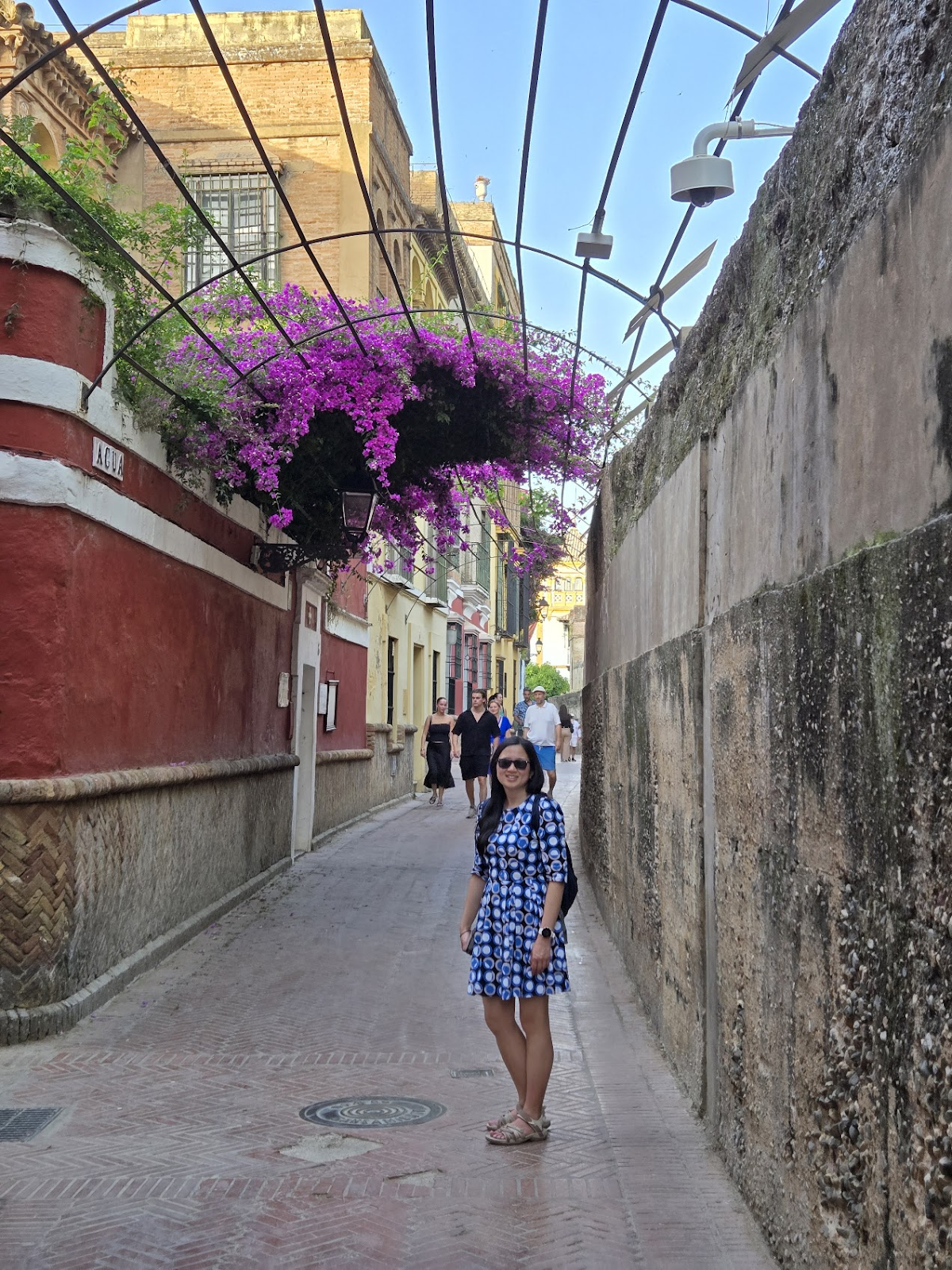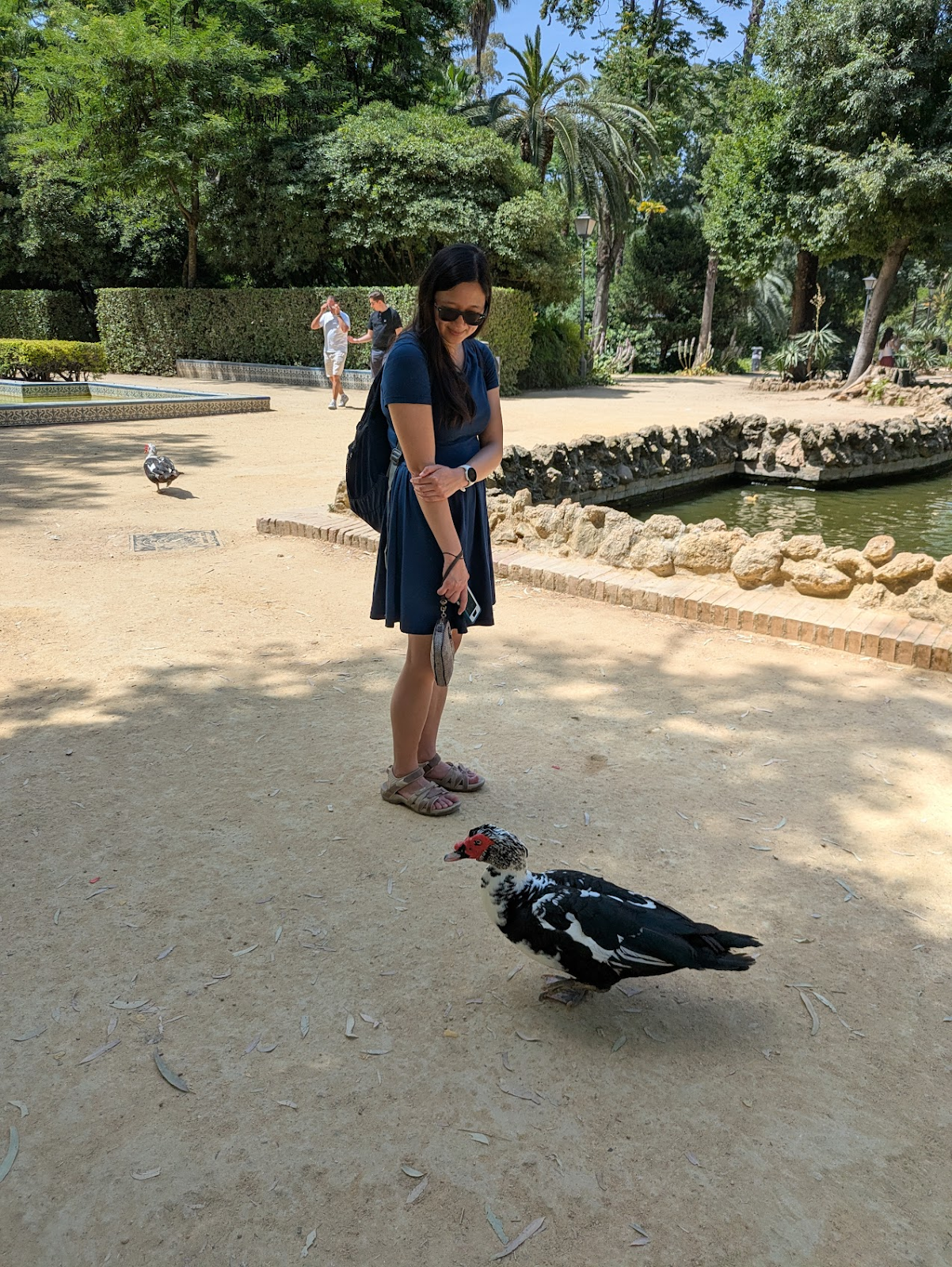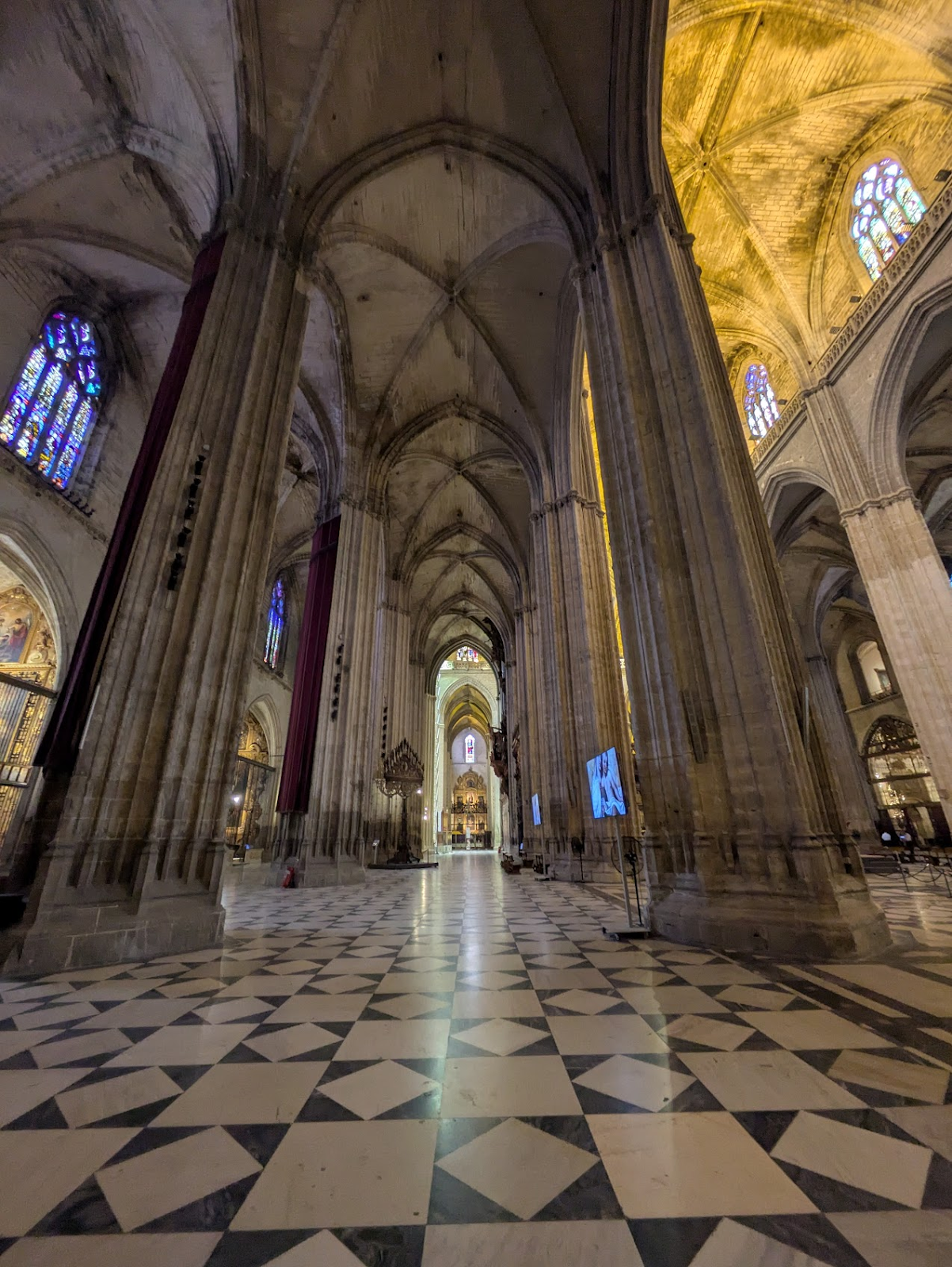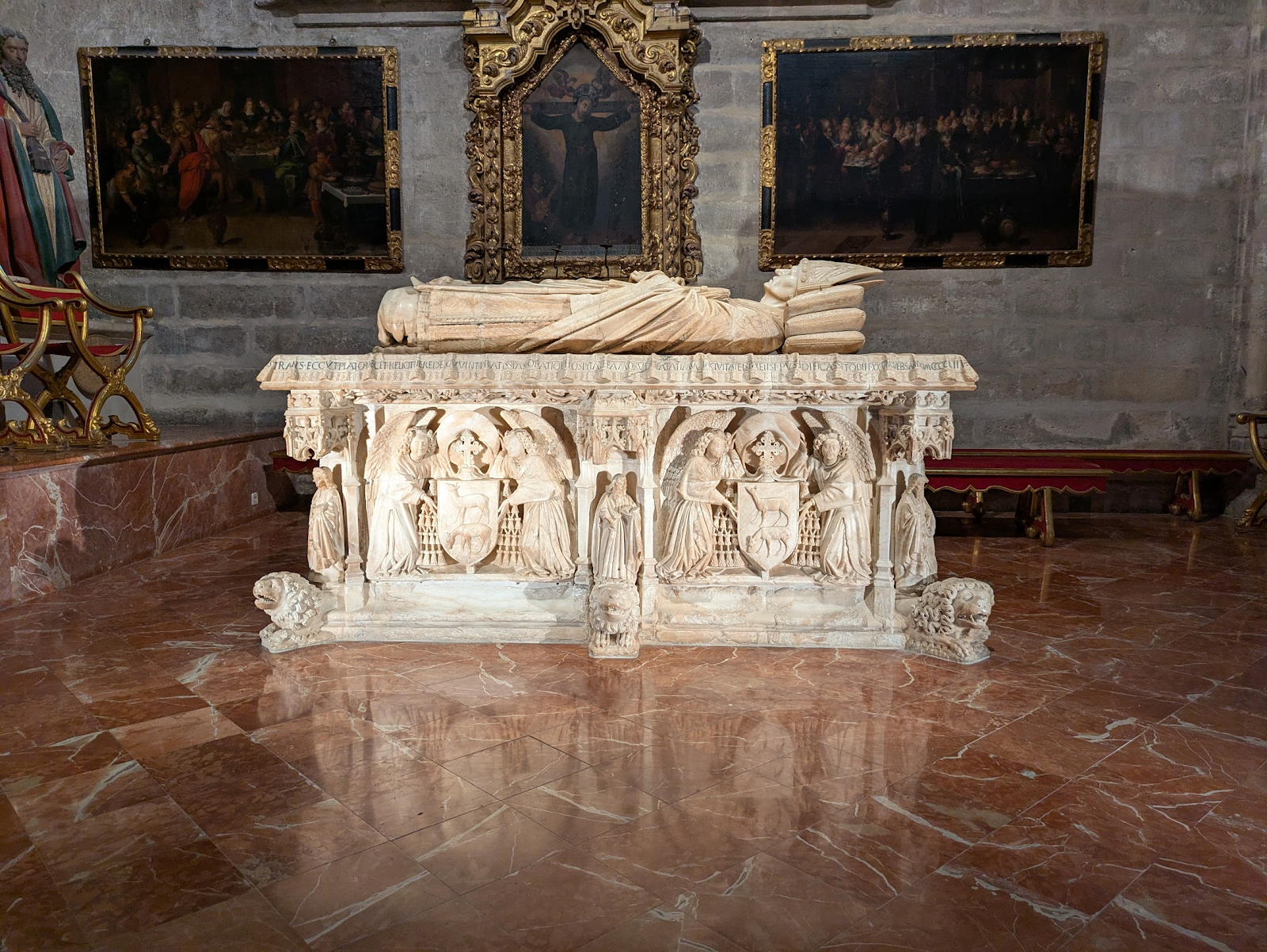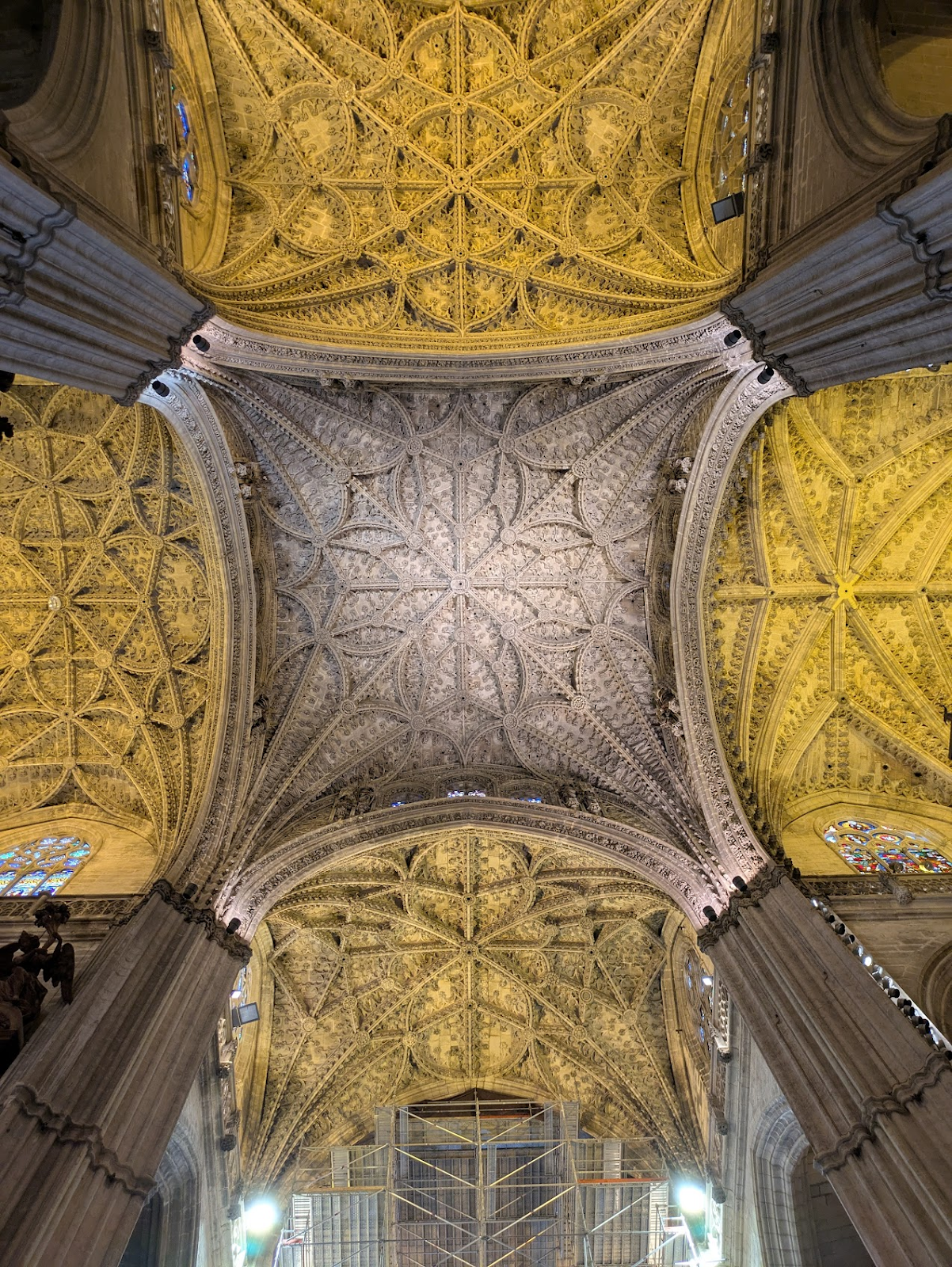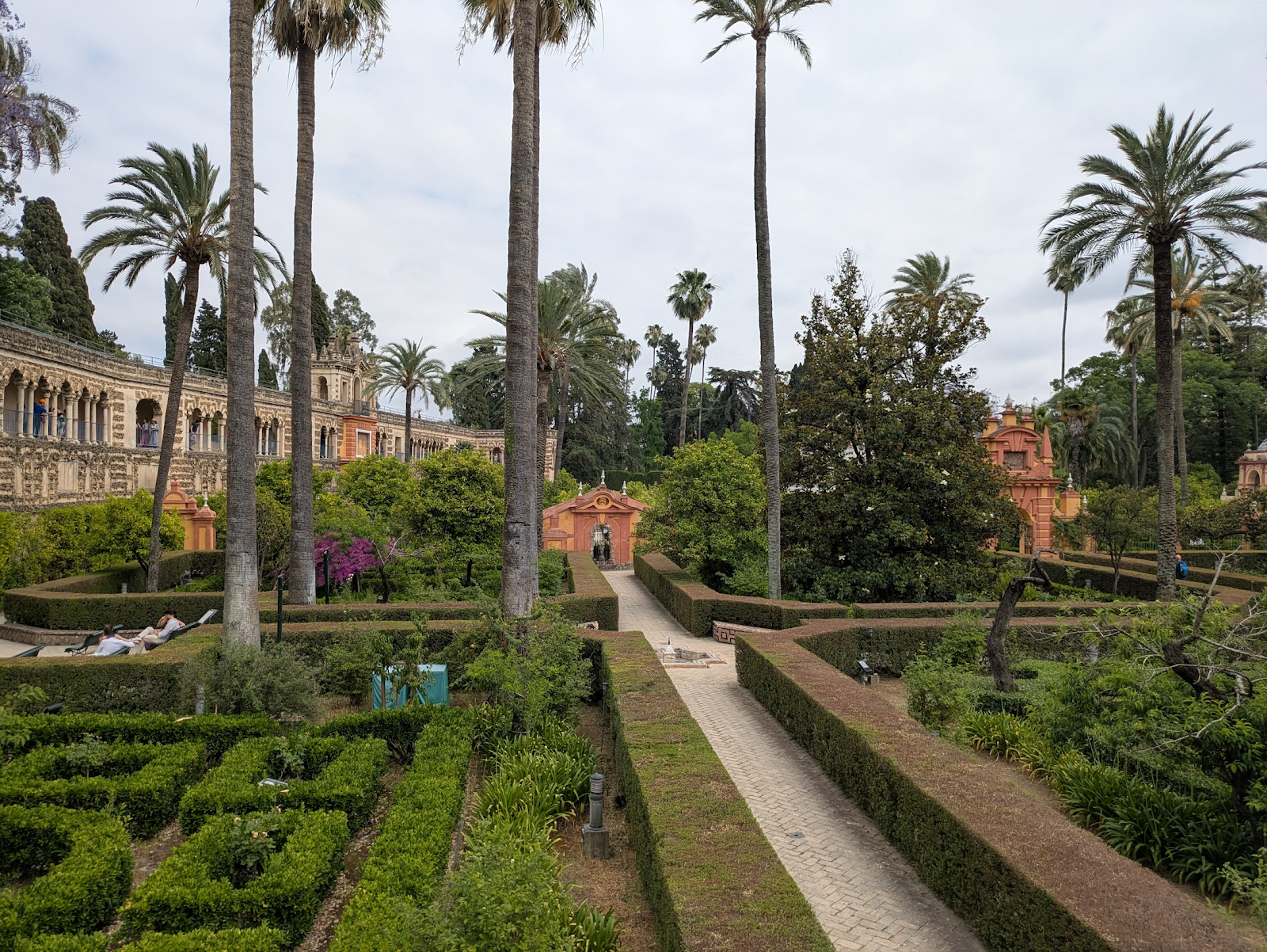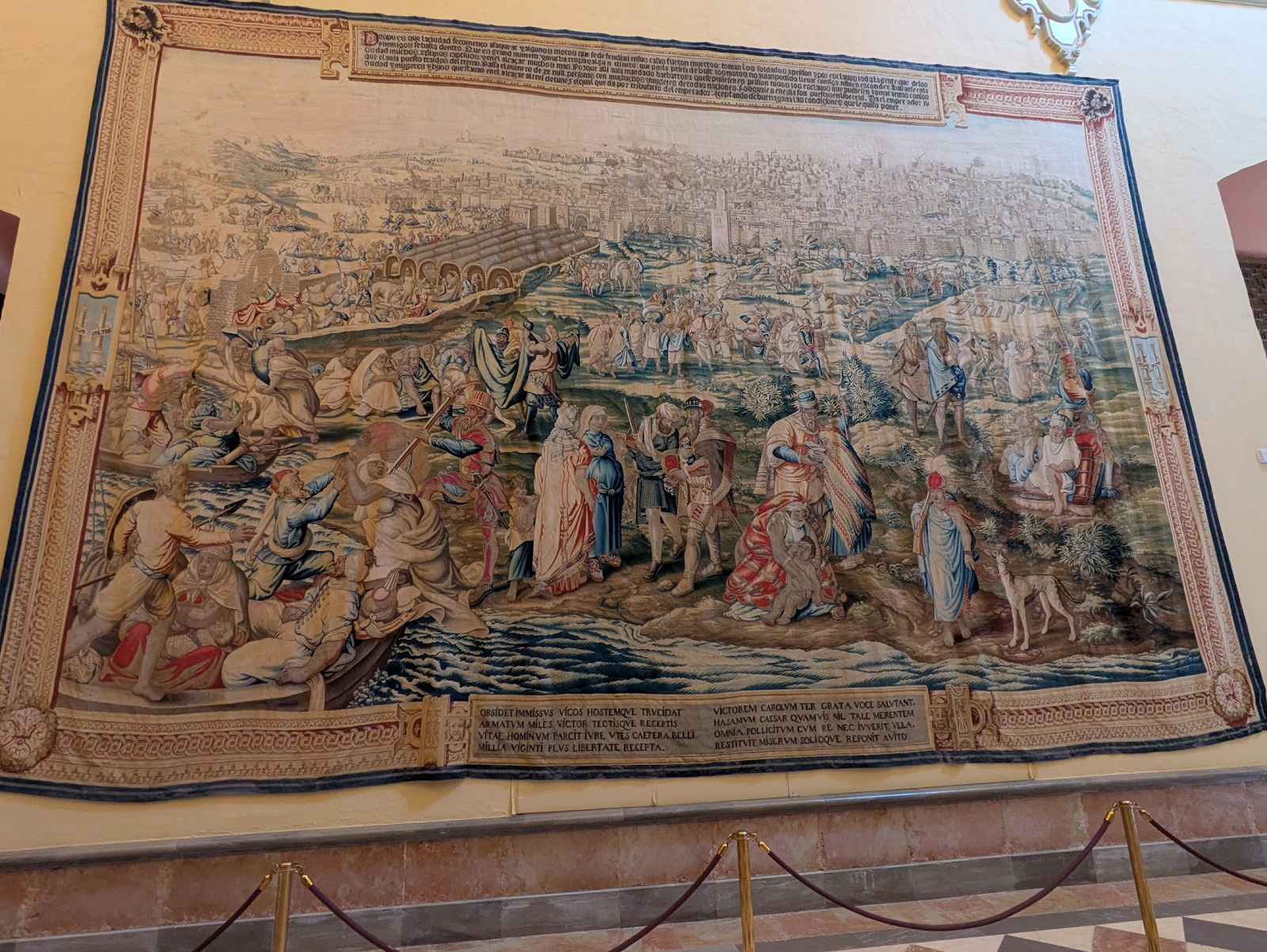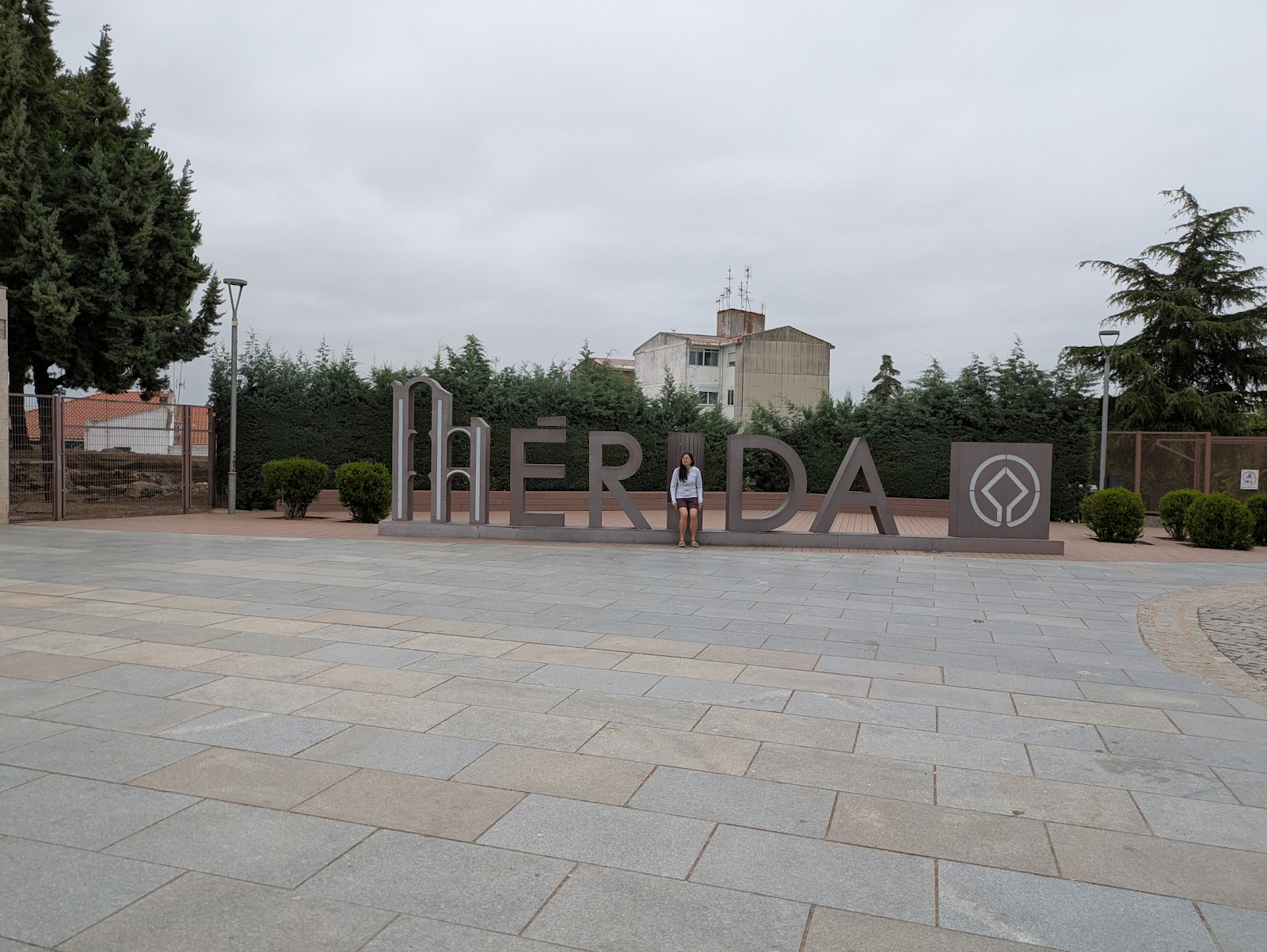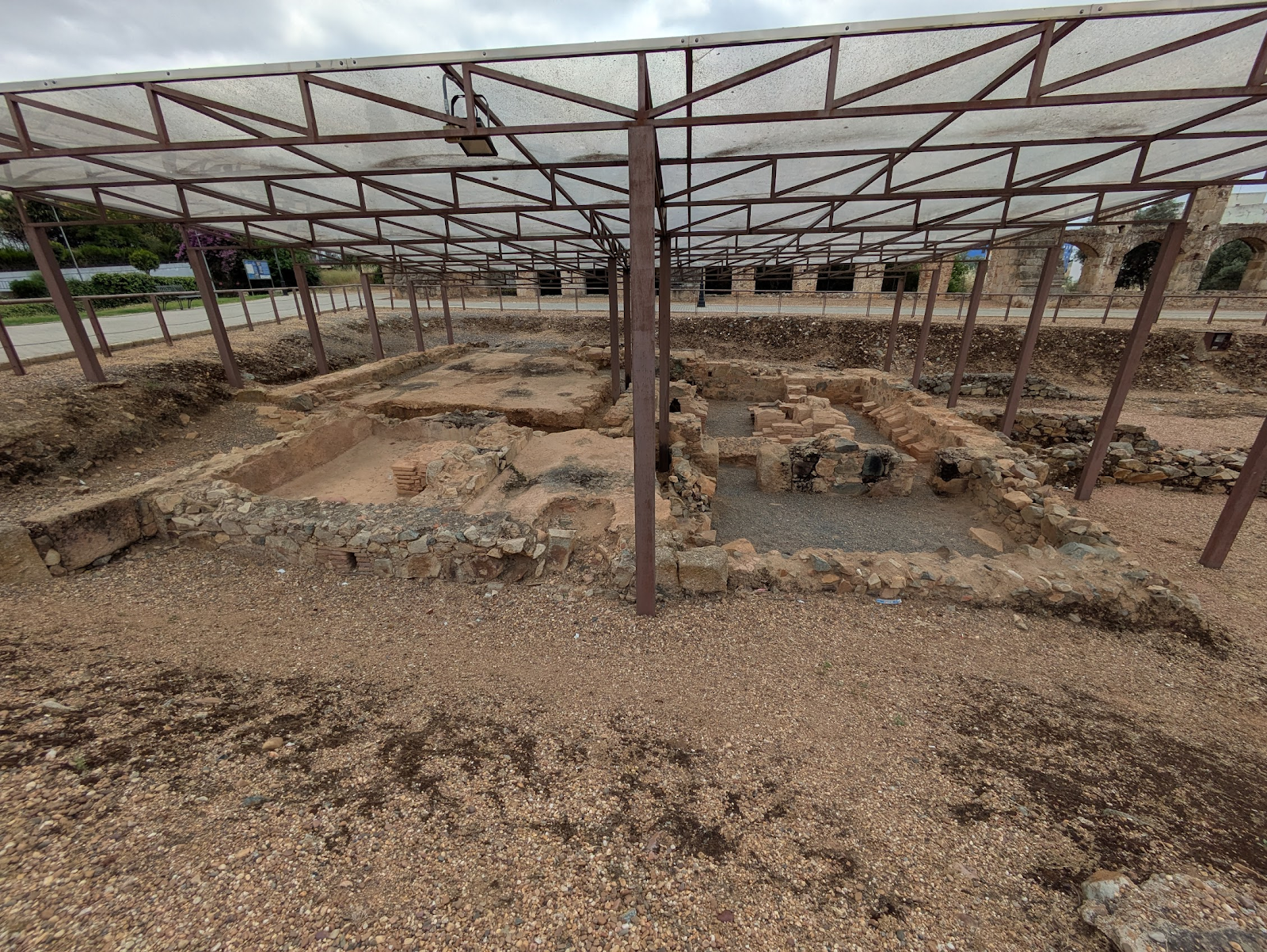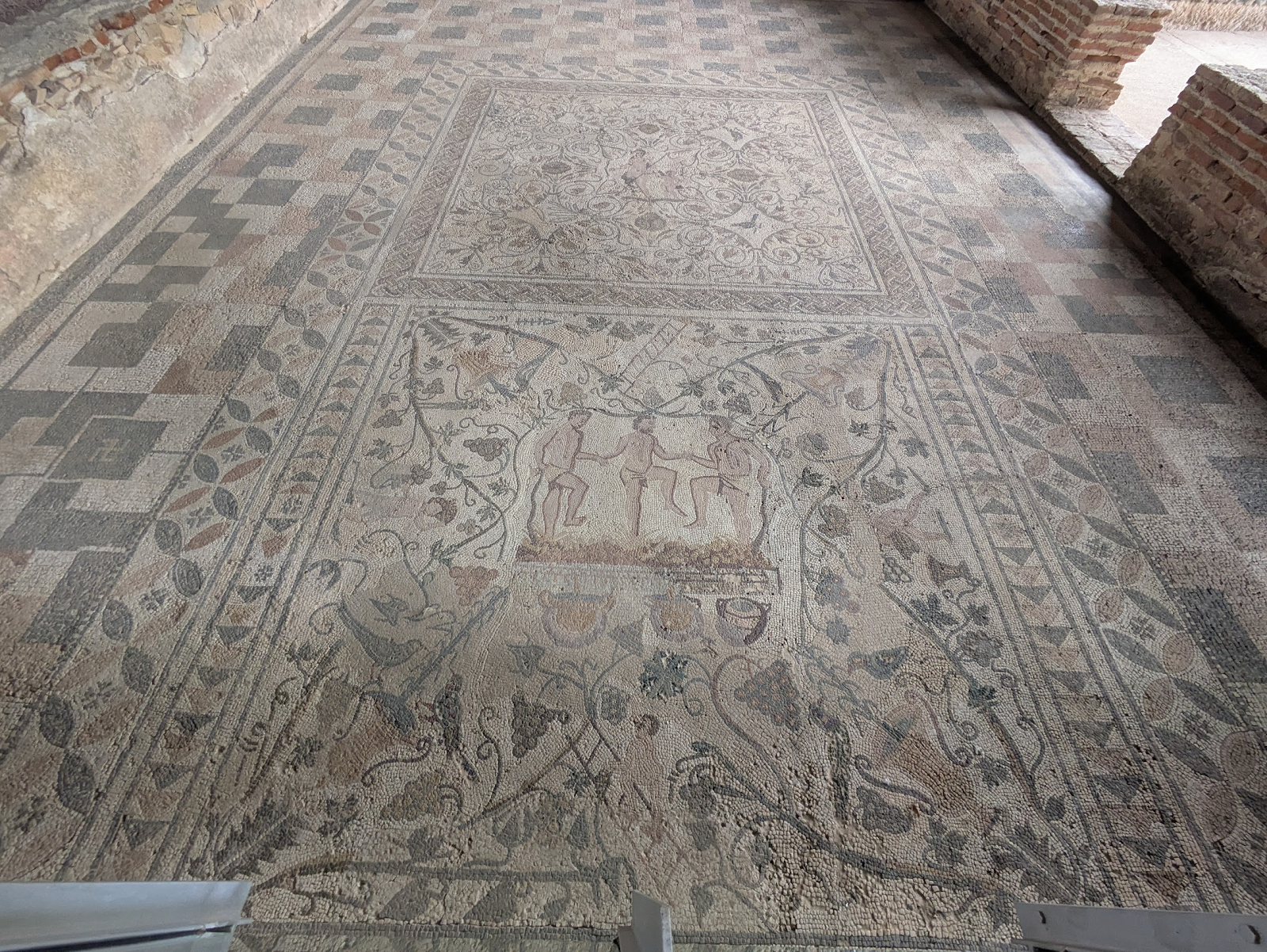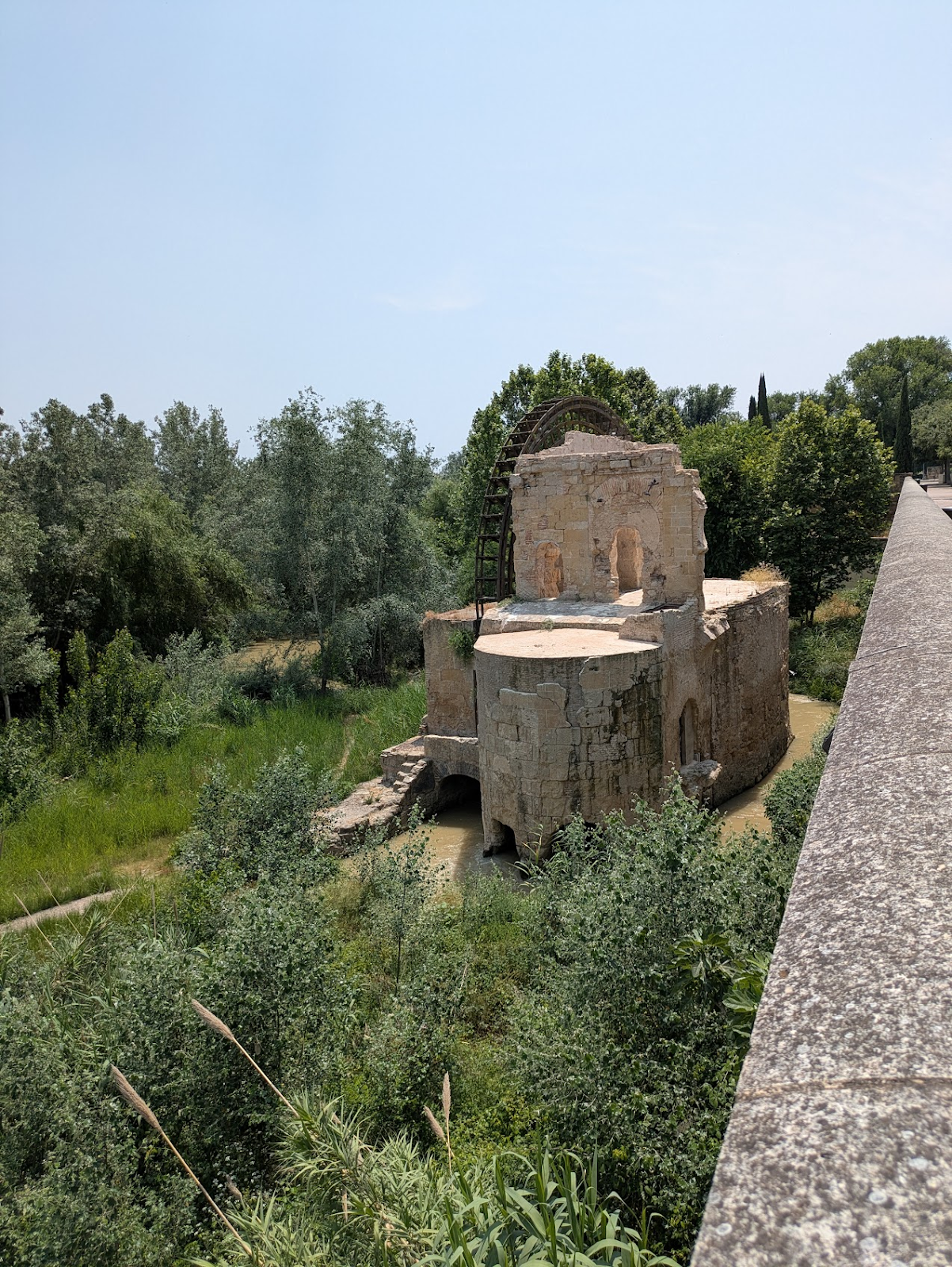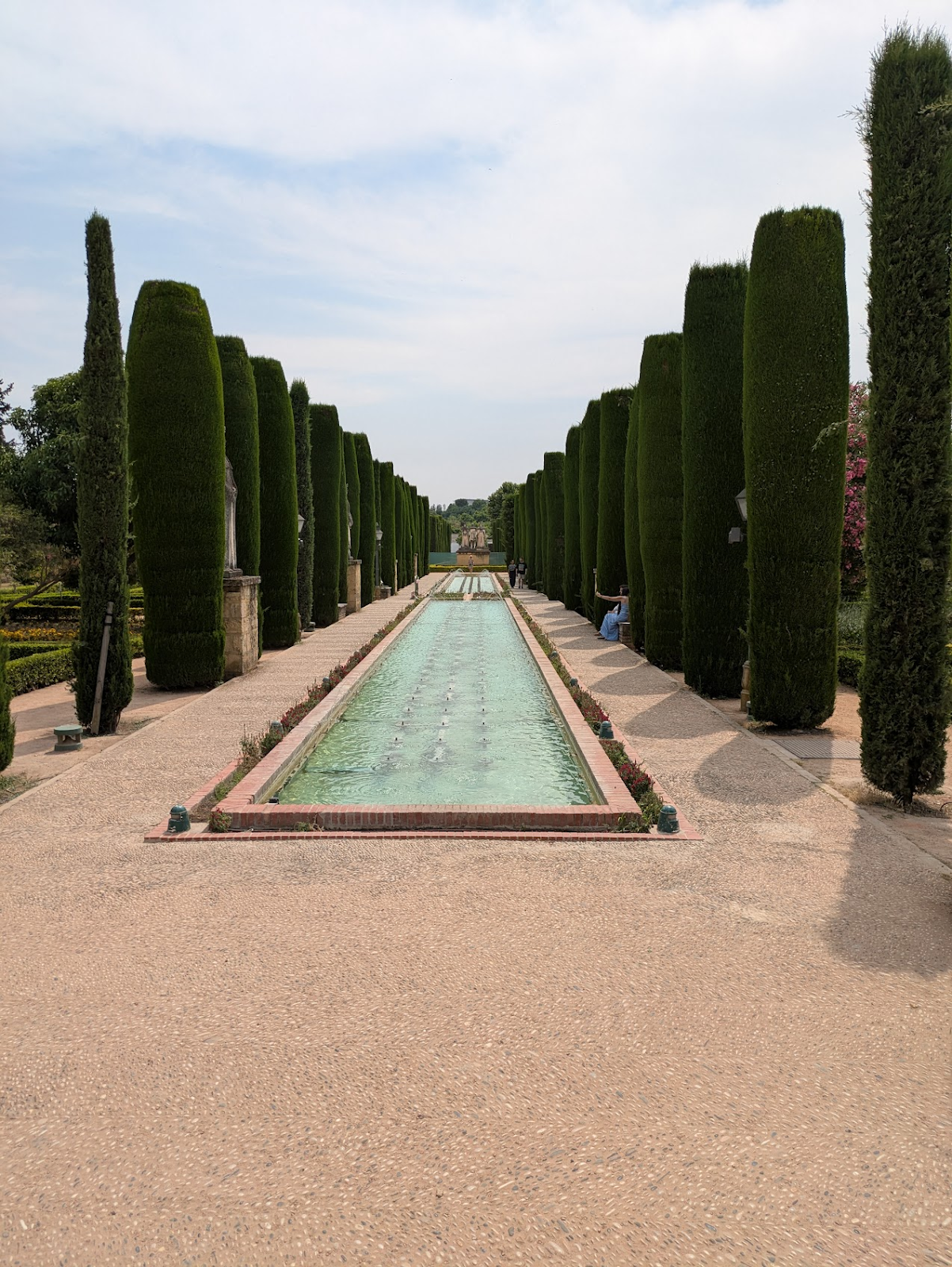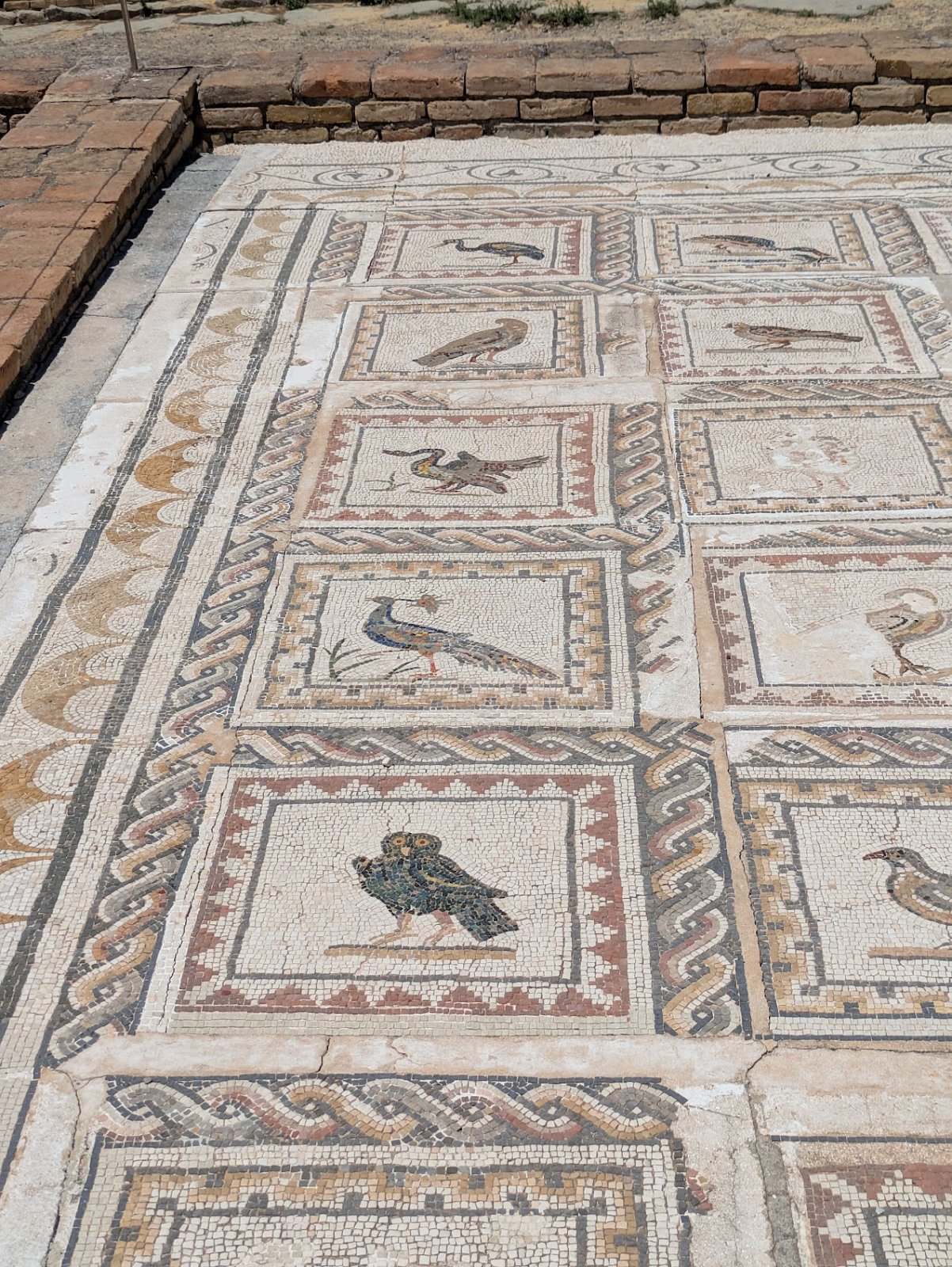Spain Part V: Seville
Saturday May 31
We had a 9 AM train to Seville. Our place in Malaga was
relatively close to the train station, plus our bus tour the day before had
been there as well so we knew where it was, and we walked there. It was a
slower regional train so we got in around 12:30. We had an apartment-style
rental again.
The problem with apartment-style rentals is the variable
nature of the owners and often, the late check-in times. We had a 3 PM check-in
so, with the temperature already at 40C and increasing, had a very hot walk to
get closer to the apartment and kill some time. We had a nice pizza at a
pizzeria around the corner from our rental, and thought we could drop off our
luggage, but had some communication problems from the host. We were able to
drop off our stuff but not until 3:30 after standing around in the sun waiting,
which was brutal, and it took another hour for the apartment to be cleaned. In
the interregnum, we went to the grocery store for supplies and by the time we
got back it was ready and we basked in the efficient air conditioning. (Though,
one thing about Spain I’ve noticed is a predilection to have the AC running
full blast with windows open). The air B&B was quite nice, with a living
room and big bedroom, hotplate, microwave and washing machine (which we made
use of).
With all the heat and limited sleep, we had a short nap, and
took a walk to orient outselves. We were about 15-20 minutes walk away from the
main monuments, including the Seville Cathedral and Alcazaba (this time a royal
palace which is still functioning as such today).
We didn’t do much else as it was late and we were tired from
travelling and the heat.
Sunday June 1
After the travel day on Saturday, we slept in somewhat and
spent the morning going to the Plaza de Espana, a large square that had been
constructed for the 1929 Ibero-American Exposition. Many of the buildings,
including two nice-looking towers, had been maintained, with most of the palace
surrounding the square now being home to various government offices. We then
relaxed in the nearby park, where we watched numerous horse-drawn wagons laden
with tourists roll by.
The mushrooms, in addition to providing welcome shade from
the punishing sun, also hosts an observation deck that we got tickets to. It
was well-done and included an IMAX-type film at the end showcasing Seville
culture. During a part showing burning candles (part of a Holy Week nod) incense
smells were piped in, and for the flying overhead vistas, the wind was blowing
in from the top courtesy of a supercharged HVAC systems.
Afterwards, we relaxed in the shade of the Setas and Nancy
went to a bookstore. We parked there until sunset to take in the Aurora
lightshow, where the Setas light up in various patterns.
Monday June 2
We had a 9 AM rooftop tour of the Cathedral booked. The
Seville Cathedral is the largest cathedral in Spain and the largest Gothic
cathedral in the world. The cathedral looked amazing from the outside and I was
excited to be able to walk among its pinnacles and gargoyles. The tour was led
by a stained class conservator from the cathedral and did not disappoint.
We were able to visit five different rooftop levels before
the cathedral officially opened to the public, all with spectacular views of both
the city and the cathedral itself.
The cathedral, like others in Spain, was originally the site
of a mosque. The courtyard, used by the Arabs as an ablution area, is now the Courtyard
of the Orange Trees.
After the tour, mass was wrapping up and we were admitted to
the cathedral interior to wander around as well. As you’d expect, it’s enormous
and ornate.
The main “attraction” is the tomb to Christopher Columbus,
whose voyage was financed by the Catholic Monarchs, Ferdinand and Isabel. It
was the first we’d seen that rivalled some we’d seen in Westminster Abbey and
St. Paul’s. No apologies for colonialism here!
We were also able to climb the Giralda (bell tower), which
was originally the minaret of the mosque. We had much better views from the
rooftops, though.
The cathedral entry ticket included a free visit to the
nearby Church of El Salvador, about eight minutes away from the cathedral. It
was a much smaller but still ornate church with a museum in the basement. The
church had recently done renovations because a stone had fallen from above one
of the chapel altars, resulting in a reevalution of its overall structural
integrity, and the museum was started then – showing the history of the site
and some artifacts. Like many churches in Spain, the site had been an ancient
worship site, then a mosque site, and finally the site of the church itself
after a 1600s rebuilding.
We had a short break before meeting up for a guided tour of
the Alcazar, with only four other people – nice size for a tour. The large
entry gates and walls betray its military origin.
However, the interior is all palace – or rather a collection
of palaces. The most impressive date to Muslim times and were repurposed after
the city was reconquered by the Christians. It is, as the guide termed it, a “mess”
as it includes elements from the 1200s through the 20th century as
the palace has been in continuous use for hundreds of years.
Like all palaces here, it is home to sprawling gardens –
these ones complete with peacocks.
Some of the palace rooms were also part of a temporary
exhibition on illuminated manuscripts.
Tapestries were also impressive, the below showing the conquest of Tunisia:
We were pretty tired by the time we were done all of this so
we walked around a bit and headed back to the apartment.
Tuesday June 3 – Day trip to Merida
This was a bit of a stretch for a day trip since it was a
3-hour (or, in actuality, 3.5 hour) bus ride each way, but the city contains
some of the finest Roman ruins outside of Rome itself and Nancy had really sold
it as an idea. We thought we might stay overnight if needed.
After arrival at around 11:15, we went directly to the Roman
bridge, which was still being used for vehicular traffic into the 1990s.
There are a number of Roman sites strewn throughout the
city. We took our time walking around to them as we bought a ticket that
included all of them for the day.
These included the Alcazaba, or fortress:
The amphitheatre, where gladiatorial games would have taken
place:
The theatre, where
mimes, plays, etc. would have been (now reconstructed and used for modern
performances):
And the circus, site of chariot racing and similar pursuits.
The Roman baths – which had different rooms for cold (frigidarium),
warm (tepidarium) and hot (caldarium) baths. A direct pipe led here through the
aqueduct system, and water was heated by burning wood beneath the floor.
An unknown public building in the middle of the city:
And the Temple of Diana, which is now known to be the site
of Imperial cult worship. It was incorporated into a palace in the 16th
century but the original columns were, thankfully, preserved.
Intact mosaic floors in an excavated house:
Merida is also known to have an extensive museum of Roman
art, but sadly it was closed for renovations so we could not go in. On the
other hand, that meant we could return the same day by bus to Seville, eliminating
the need for an oversight stay in Merida. We got home at around 11 PM.
Wednesday June 4 – day trip to Cordoba
This was another day trip we had debated including but we
ended up going ahead with it. We took the slower nearly two hour regional train
to this city, arriving at around 11 AM.
On our way from the train station to the historical centre,
we walked through typical narrow streets and the old Jewish quarter. We then
arrived at the premier attraction of Cordoba and the primary reason for our
visit, the Mosque-Cathedral.
Like many other churches in Spain, this was originally the
site of a mosque from the time of various caliphates and emirates starting
after the fall of the western Roman empire and subsequent sacking from the
German Vandals and subsequent settlement by the Phoenicians. Unlike others, it largely
preserved the mosque as it was and simply rebadged it.
The mosque was expanded three times by successive Muslim rulers and eventually could hold tens of thousands of worshippers. It has a grand entranceway and a mihrab, which is the primary point of worship in Islam. The interior is a forest of columns made mostly of marble (some plundered from an earlier Christian church on the same site) supporting a low roof.
Chapels were built along the walls inside the mosque.
In the 1500s, though, it was decided to essentially plunk in
a Renaissance-style altar, nave and transept in the middle of the mosque. So
the building is an interesting mix and the transition between the two styles
feels very abrupt when you are walking through it. Charles V of Spain, who gave
permission for this remodelling despite arguments to the contrary from Cordoba
City Council, is reputed to have regretted approving it, saying “You have built
what you or anyone else might have built anywhere; to do so you have destroyed
something that was unique in the world." In any case the result is
striking.
After visiting the cathedral, we had a menu del Dia
(essentially a three-course fixed-price lunch) at a nearby restaurant, finishing
up when a tour group came in. These are popular at lunchtime in Spain.
We took a look at the Roman bridge and tower, which are
still in great condition as well as an old mill built along the river.
I went into the nearby Alcazaba, but much of it was closed
off for restoration works. There was another large garden, including the
grandly named “Promenade of the Kings”, which was nicer than the limited view
from the one tower that was open for climbing.
We walked slowly back to the train station after our brief
visit. We were on a fast train for the return trip (45 minutes instead of
nearly two hours) but the train ahead of us had stalled on the track
(apparently) just when we got to Seville so we were an hour and a half late
getting to the station. (I got a 50% discount in voucher form, only usable for
the next year, as compensation).
Thursday June 5 – day trip to Italica
We slept in (relatively speaking) today and went to the grocery
store in the morning, then had lunch. We walked to the bus station and caught
the local bus to Italica, which is essentially in a suburb of Seville. Italica
was the site of some Roman ruins. There we paid a cheap entry fee to be able to
enter the site. The main attraction was the Roman ampitheatre.
There was the remains of some other buildings as well, many
with in situ Roman mosaic floors in remarkably good condition.
We also saw more Roman baths and the foundations of some other
gathering places, houses and walls.
We caught the 3:30 bus back to Seville and relaxed /napped for
most of the rest of the day (it was another very hot day) and did a brief walk
around the cathedral area to do some shopping and say goodbye to Spain in the
evening. Then it was time to pack.
Friday June 6 – home
We have three flights home (Seville-Lisbon-Toronto-Edmonton) and currently are sitting in the Toronto airport after the hour to Lisbon and eight to Toronto. Nancy likes to be super early for everything, so we were up before 6 AM to take the cab to the airport in Seville.
Spain general observations:
· Lots of people smoke here and people throw their butts on the pavement a lot too.
· People actually do that air-kiss-on-each-cheek thing you see French and Spanish people doing in movies.
·Things are later here - lunch is later, dinner is quite late usually.
· People are helpful but there is little small talk with service staff – this is not just a language issue, as I noted they do the same with locals as well. It’s rather nice not to have to listen to people pretend to be interested in your day and vice-versa.
· No tipping anywhere for anything.· Generally people seem to be in better shape here and put more effort into their appearance – I especially noted this in Madrid.
· Weather is very hot, peaking at 40C, which is hard to manage for us. Summer would be brutal.
· Pace is slower
· Lots of grand plazas and boulevards with lots of greenery, lots of fountains, monuments. Public spaces are a priority, which probably makes sense as in the areas we stayed in, no one has a yard and the doors to apartments (or apartments above stores) open directly onto a narrow street. There is however the occasional rooftop garden.
· Lots of roses, flowers, gardens, hedges.
· Traffic circles everywhere and relatively few lights.
· Lots of hills, the cities are built on hills will cobblestone streets.
· Running AC with the windows and doors wide open, you’d never see this in Canada
· “No walk” signs are a suggestion and people routinely ignore them if it looks safe. In general there seems to be more of a reliance on common sense and less on rules.
